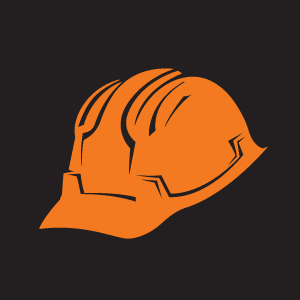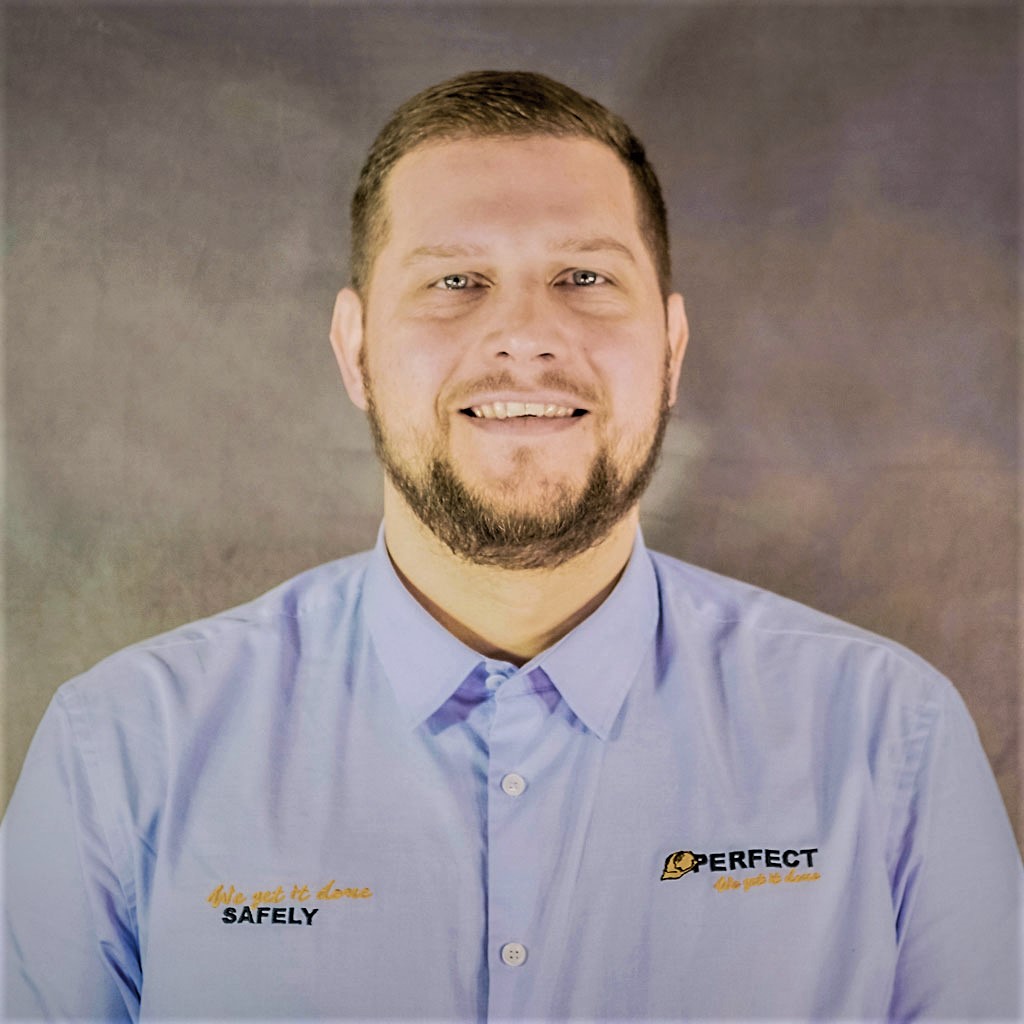Pathways to Working in Construction on the Rail.
- magda

By Daniel Green, HR/HSEQ Manager
The rail. One of the oldest and most important pieces of transport infrastructure we have. A service this vital requires constant maintenance and upgrades. But what steps are required to get on a rail infrastructure job site?
The barriers to working on the rail are many – and for very good reason: the risks posed by live railway assets far exceed those found on residential, commercial, and even industrial construction sites. But with roadblocks aplenty – how does one get themselves physically on a rail construction site? Look no further – this article will beat the very path you need. Baseline, you will need a Construction Induction card aka a White Card, a strong drive, and some rail-specific jargon to wrap your gums around.
RIW.
A Rail Industry Worker. Also slang for the ID card that rail workers use to swipe onto a rail construction site. This acronym can also describe businesses, courses, and assets within the greater rail industry.
MTA Card.
Railway workers use the teal and white ID card to access rail asset construction sites. This acronym stands for Metro Trains Australia and supersedes the old green and white RIW card.
Category 3 Medical.
The health check pre-qualification is a requirement for obtaining an MTA card.
Rail Corridor.
The land on which a railway is built comprises all property between property fences. If there are no fences, this area is the land within 15m from the outermost rails.
RIW System.
The administration portal is used to track rail workers and their designated roles. Metro Trains Australia runs this portal and mostly your employer or you have access to it.
Possession.
A block of time allocated by the asset owner to complete works inside the Danger Zone on railway infrastructure. So, named because the section of rail where works occur is taken ‘possession’ of. In Greater Sydney, the asset owner is Sydney Trains and for the remainder of NSW, it is the ARTC.
Possession Works.
Construction, demolition, remediation, or maintenance works that occur during a Possession.
Works Outside the Danger Zone.
Maintenance, construction, demolition, or remediation works that occur inside the rail corridor but outside the Danger Zone. Workers will still need an MTA card. But the works are not carried out under Possession as there is no need.
P.O.
A Protection Officer. The nominated safety coordinator is charged with the safety of all workers in Possession.
Working On The Rail.
Personnel seeking work on the rail need to enter the industry with a vital piece of training known as a RIW course, as well as a comprehensive medical test via a Cat 3 Medical. Delivered only by qualified RTO’s and specialised medical clinics, for the cost of a day and a little under $500, successful trainees will find themselves with the coveted Safely Access the Rail Corridor qualification [TLIF2080] and a clean bill of medical health. But this doesn’t now grant you access to working on the rail. In fact, the process has just begun.
If none of the companies registered with Sydney Trains has employed you, then you will need to gain employment with one. These businesses will generally be rail worker labour hire providers like Perfect Hire, tier one rail infrastructure subcontractors, or track machine wet hirers. If you are already employed by a company registered with Sydney Trains then you can obviously skip this step. In either case, you will need to obtain your MTA card. This card is teal and white and has a photograph of you in the top left corner and a QR barcode in the top right corner. It also has a card number unique to you as well as a card issue number. The previous iteration of this card was green and white but this card is rarely acceptable.
How To Get Your RIW Card:
- Firstly, your employer must be a Primary Employer on the RIW System. This means that the company is registered to supply workers to the rail industry.
- Once you have completed your RIW course and Cat 3 Medical, your employer will then add your basic details into the system [first and last name, your date of birth, email address, phone, home address, and a profile pic].
- You will then receive an email to approve your employer as your Primary Employer on the RIW System. Check your junk email inbox box.
- Your employer will then order an ID Check in the RIW System.
- You will get an email from the RIW System to carry out your ID Check. You will need to log in to the RIW System via a link provided in the email and submit a form of official government ID [Australian Driving Licence, Passport, State Age Card].
- Once they approved your ID Check, your employer can then submit your TLIF2080 – Safely Access the Rail Corridor, White Card, and Cat 3 Medical. The RIW System personnel checks it and if correct – it is approved.
- Your employer can now order your card by paying the $30 annual RIW subscription and the once-off $50 card fee.
- Next, your Employer will need to get two general roles approved on your profile. Around the Track Personnel [Construction/Maintenance] and TfNSW – Operator. If you have specialty qualifications then you will need to have further roles approved.
- You will get a notification in your email on how to load your Digital Card into your RIW Wallet via the Vircarda app. This Digital Card can is usable for accessing rail construction sites. But it is only when there is an approvement for your roles in the RIW System.
- Once this process is fully complete, your employer will need to periodically log in to the RIW System to check if you and your roles have been approved. Once approved you are now free to work on a rail construction site.
IMPORTANT:
This process is labour intensive for the office staff, requires extreme attention to detail, and is almost always time critical. And it often takes two weeks from giving your employer your RIW course certificate and Cat 3 Medical to actually be allowed to work on-site. So, there is very little room for error. You can help your employer by only providing up-to-date personal information and being readily available should they call or email you. Remember, this process doesn’t cover company/site/project-specific inductions.
In addition to normal tier-one PPE, you will need to wear rail-specific PPE in the form of an RIW shirt and a colour-correct hard hat. This is a high-vis, orange long-sleeved cotton drill shirt with a reflective X on the back in 50mm silver tape. The strips are to be stitched on and are to have nothing obstructing them. Long pants are to be worn with a white hard hat [not yellow as this colour is reserved for the P.O., not orange as this is for direct rail staff, not blue as this colour is worn by rail Supervisors and not pink as this is for spotters] and any PPE specific to your task.
Now you’re ready to work on the railway. You will need to have a blood alcohol level of 0.000 and be clear of illicit substances at all times. There is a zero-tolerance policy on the rail with a minimum five-year ban for those found under the influence of either.
More Rail Specific Jargon.
TMO. Track Machine Operator. A qualification that allows a worker with a non-rail-specific ticket to operate that piece of mobile plant in the rail corridor.
RISI. Rail Industry Safety Induction. A defunct term that has been replaced by RIW.
Electrical Spotter. A worker who’s sole responsibility is to ensure that workers operating near electrical assets remain safe. Requires the qualification: Working Near Live Electrical Apparatus as a Non-Electrical Worker [UETTDREL14A].
Further Reading.
For more information, follow these links.
RIW Training and Cat 3 Medical:
urbanrailsafety.com.au
The RIW System:
riw.net.au
The RIW course in the Dept. of Education:
training.gov.au/Training/Details/TLIF2080
100 points of ID check:
https://www.afp.gov.au/sites/default/files/PDF/NPC-100PointChecklist-18042019.pdf
White Cards:
https://www.safework.nsw.gov.au/licences-and-registrations/white-cards
A Glossary of Rail Industry Terms:
https://railsafe.org.au/glossary












